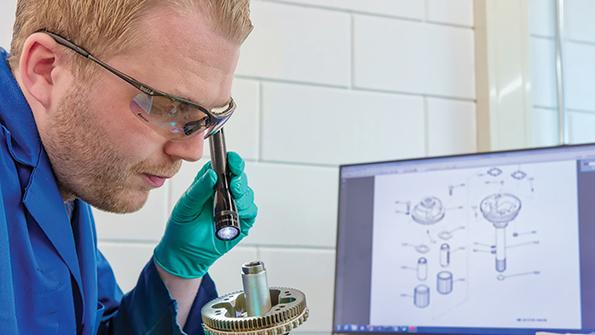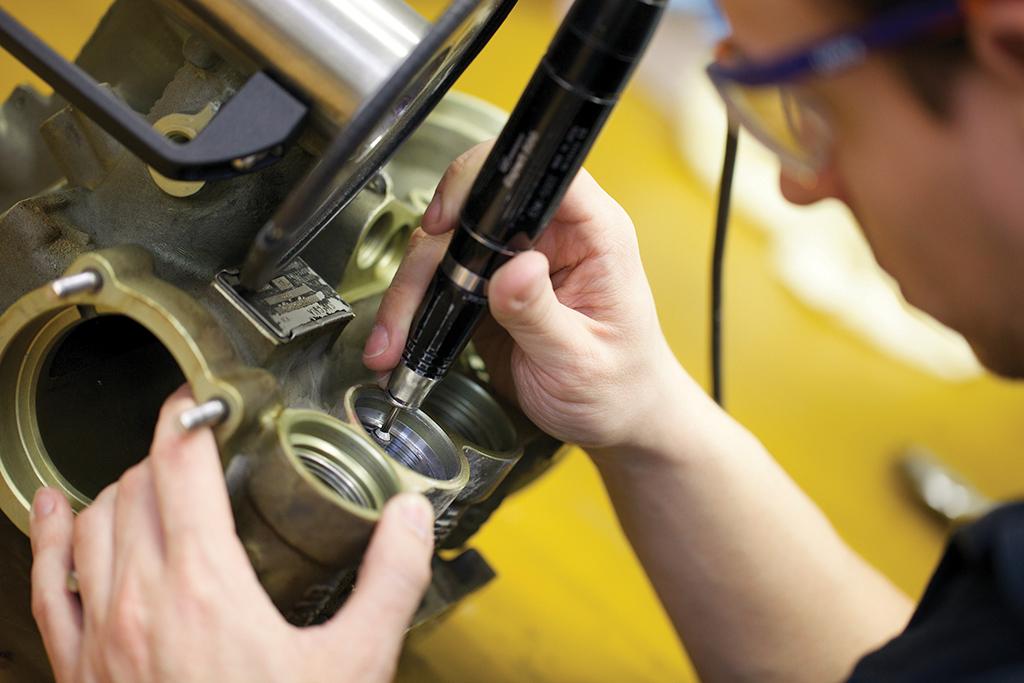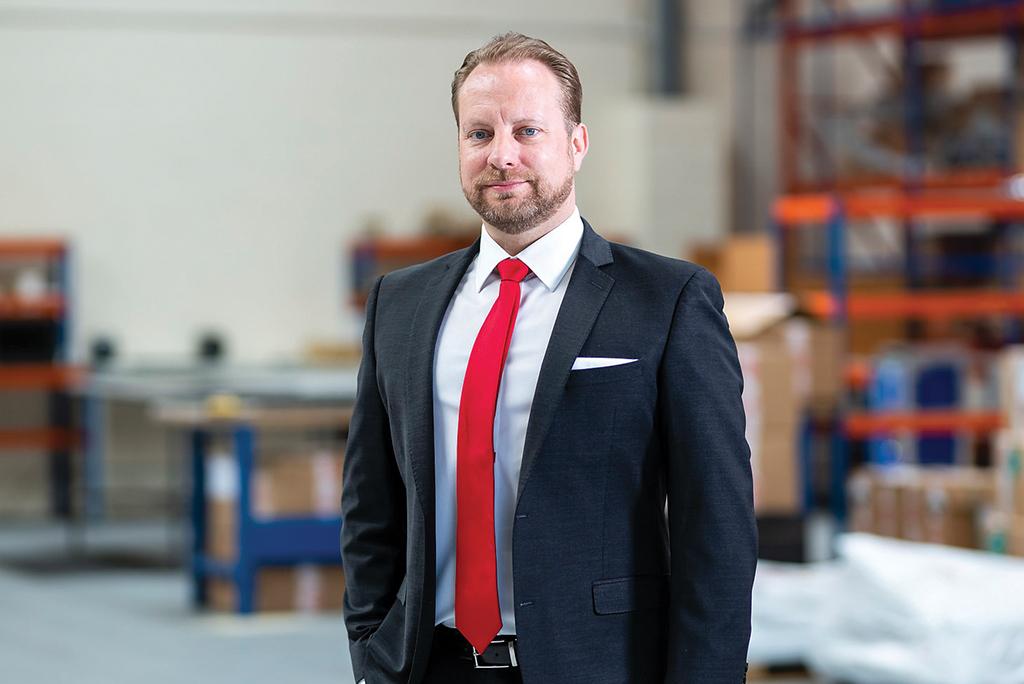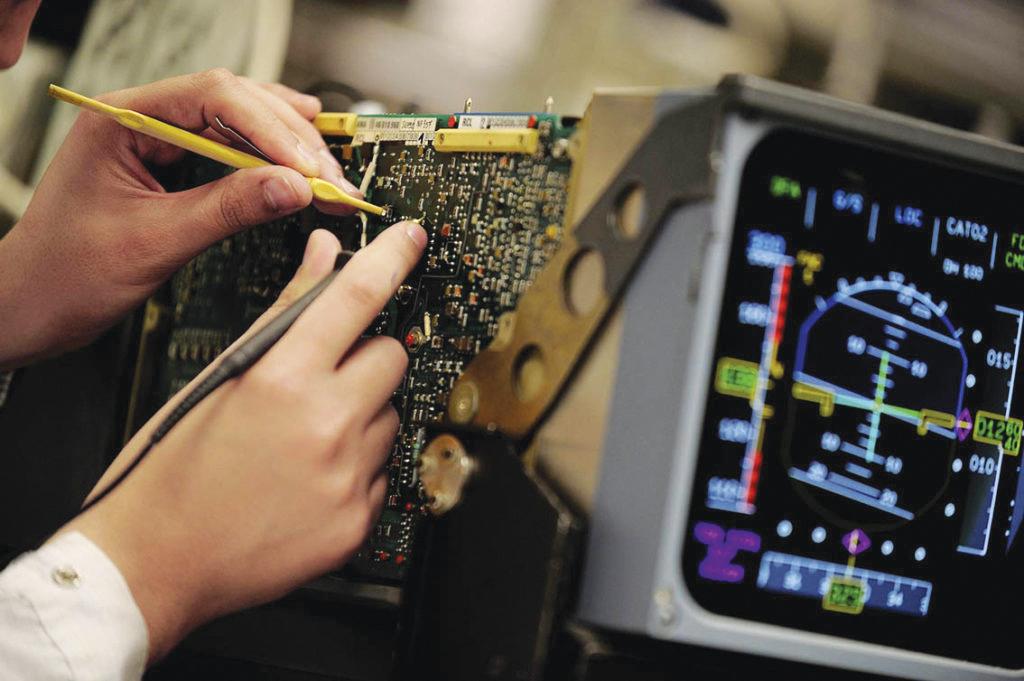
Fokker Services is seeing increased demand for component repairs in the EMEA region.
Supply chain pressures in the MRO and aftermarket sectors are affecting component repair capacity and demand in Europe, but adapting to changing needs and finding alternative solutions will drive business continuity.
Post-pandemic supply chain issues for MROs such as the UK’s AerFin are having an impact on turnaround times (TAT), a problem for both OEMs and independent MROs. “The two main issues currently affecting the supply chain are lack of availability of spares needed for component repairs and a lack of manpower to cope with the increase in demand,” says Mat Punter, head of repairs at AerFin.
Punter says the delays caused by a lack of spares were made worse by several issues. During the COVID-19 pandemic, workshops dramatically cut back on procurement and investment in spares, partly to preserve cash flow as component repair volume decreased and partly due to the uncertainty of when—and if—the volume would return.
This, in turn, led to a reduction in production of spares by manufacturers, some of which had already been forced to cut production due to lack of availability of raw materials and insufficient workforce. Post-pandemic, with the easing of travel restrictions, demand for air travel returned rapidly, and demand for component repairs returned accordingly. “This resulted in any spares that were available being consumed quickly, and manufacturers were unable to restart production quickly enough to meet demand, causing an increase in repair TATs,” Punter says.
During the pandemic, many skilled engineers and expert support staff left the aviation industry, either because of redundancy, retirement or disillusionment with the sector as a whole. As demand returned and companies frantically attempted to rehire staff, they found a lack of experienced workers available on the labor market. As Punter notes, this led to several OEMs, manufacturers, airlines and independent MROs facing pre-pandemic volumes of work—but with a reduced workforce.
Timely access to aircraft parts is crucial, and even more so for mature fleets. At component MRO Spairliners, the pressure on the supply chain is higher than ever, according to Rene Popp, head of engineering, asset and the AOG (aircraft-on-ground) desk. “The issue we must deal with is piece part shortages, which is affecting both sides,” he says.
Popp adds that OEMs were having difficulties ramping up production, which had a knock-on effect on repair TATs on a significant scale. “Parts with an average repair cycle of weeks can be unavailable even after a month. Concurrently, the lead times for new parts are increasing as well,” he says.
Spairliners sees these issues as a growing challenge, and its staff is working around the clock to find solutions for getting new parts on the market to speed up repairs and, in some cases, even hunt down piece parts to secure the service levels expected by operators.
Demand for component MRO and pooling is always fluctuating, and aircraft retirements are part of that business. However, according to Dirk Hanenberg, director of operations for EMEA (Europe, the Middle East and Africa) at Fokker Services, demand for certain aircraft platforms will decrease, or the focus will move toward replacing instead of repairing parts.
“We can also see that interest in other platforms will increase. For any MRO provider, it is important to provide the right products and services to support these changing customer demands,” Hanenberg says. “Retirements will continue to happen, and it is our role as an independent component MRO provider to ensure that we are prepared.”

Fokker Services is seeing an increased demand for component repairs in the EMEA region, which Hanenberg expects to continue. While there has been a sharp increase in travel demand, European airports have been plagued by labor problems that limited flight operations this past summer. “It is yet to be determined how this will impact component demand, but in general we know that when an operator’s flight hours decrease there is a negative impact on MRO demand,” Hanenberg says.
Another crucial factor in regional demand is the shift from global to local sourcing—in line with the sector’s ambition to reduce its carbon footprint.
Hanenberg says the overall impact of market instability on European demand is still hard to predict because of several new factors at play. Many end users are still in the process of calibrating their operations in the current environment.
At Lufthansa Technik (LHT), almost all signs are pointing in the direction of further growth. Sven Taubert, head of corporate strategy and market intelligence, takes a different view of the suggested decrease in component MRO and pooling. He says the Airbus A320 and Boeing 737 were the most popular aircraft for pooling and, system-wise, there is huge commonality between the A320neo/737 MAX and the A320ceo/737NG.
“If aircraft are retired, they will usually be replaced by aircraft that are similar regarding our Total Component Support [TCS] product. In the long-haul aircraft market, it looks a bit different, but the A350 and 787 are already successful TCS types,” Taubert says. Moreover, he notes, there is still plenty of growth potential with low-cost airlines, which value the advantages of parts pooling.
Given the current supply chain challenges, there will likely be a push toward longer-term component arrangements much like the airframe side is seeing. This trend is evident with the recent signing of a five-year contract between LHT and Smartwings that covers repair and overhaul of components for the airline’s fleet of 30 737NG aircraft. The new contract includes component MRO services and pool access, as well as component delivery to selected international airports within Europe.
LHT provides component services for various civil aircraft types and, because an operator’s requirements may vary, the services can range from the repair of a single component to long-term all-inclusive service packages.
Taubert sees trends gravitating in both directions—for shorter or more flexible contract durations (as experienced during the COVID-19 crisis) as well as for long-term partnership arrangements. He says every operator has unique requests and faces different environments.
“At LHT, we do our best to suit all needs, but it is obvious that in these volatile times, long-term partnerships help sustain a certain level of stability,” Taubert says.
Smaller carriers often have a sharp focus on operations. Driven by cost efficiency, many opt to outsource technical services in bigger packages rather than working in-house or managing a complex structure of many small-scale agreements. For these operators, it tends to work in their favor to have a dependable technical partner integrating multiple services.

Hanenberg figures operators are more than willing to sign longer-term contracts to resolve supply chain issues, he says. “The biggest issue we foresee is the impact of price escalation by OEM suppliers. Significant price increases are being forecasted for 2023 whilst MRO providers, like us, have limited opportunities to mitigate the full impact of such increases.”
From that perspective, Hanenberg feels long-term arrangements with operators are often mutually beneficial, as they allow for investment in supply chain optimization as well as cost engineering to lower the total cost of ownership. “We actively engage in open discussions with our customers on how to deal with this major issue [that is] one of the biggest challenges in our industry at this moment,” he says.
Cost control will continue to be a prime focus for airlines in the next few years. The relatively low cost of parts manufacturer approval (PMA) components and designated engineering representative (DER) repairs is increasingly of interest to operators. The aircraft PMA market has grown significantly over the last few years, and DER repairs are particularly efficient in cases of newly introduced products where the aftermarket is not yet fully developed.
PMAs and DERs have not always received a warm welcome from some industry sectors, primarily from lessors that believe they undermine the value of the asset. However, there has been a gradual shift in perception over the years, especially in a climate of severe cost control for aircraft operators.

Hanenberg says there is demand for such solutions from European operators. “If some OEMs are unwilling to discuss price escalations, some operators might only see one way forward: find alternatives,” he says. Hanenberg stresses that PMAs, but more so DER repairs, are possible solutions, and many operators are willing to discuss these options with their suppliers to offset high price increases.
“In general, acceptance of DER seems to be easier than acceptance of PMA in the European market, but there is definitely a shift in an attempt to restore balance following the significant price escalations by most OEMs,” Hanenberg notes.
Taubert has similar thoughts about the demand for PMAs and DERs in Europe. He says LHT was able to utilize DER and used serviceable material wherever it helped customers reduce operational cost. Aside from the cost aspect, Tabuert says it was also a small but easy contribution to the sustainability efforts of the aerospace industry.
Punter from AerFin is optimistic about the gradual supply chain recovery, but he feels there are still issues driven by the worldwide shortage of chips, the increase in costs from fuel and energy, delays with shipping and the slow recovery of the workforce.

